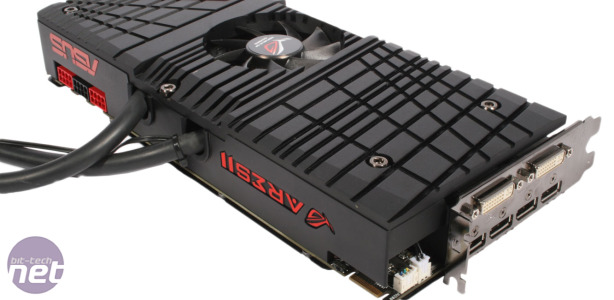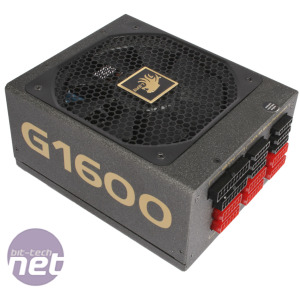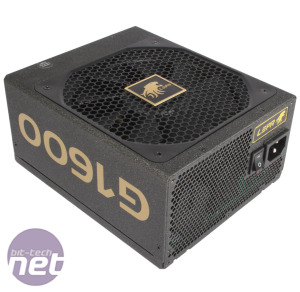
How We Tested
As always, we did our best to deliver a clean set of benchmarks, with each test repeated three times, and an average of those results is what we’re reporting here. In the rare case where performance was inconsistent, we continued repeating the test until we obtained three results that were consistent.The tests performed are a mixture of custom in-game time demos and manually-played sections, using FRAPS to record the average and minimum frame rates. We strive to not only record real-world performance you will actually see, but also present the results in a manner that is easy to digest.
Following feedback from our readers, we've taken the opportunity to update our benchmarks and have re-tested all of the current generation cards that we've been able to get our hands on. We'll be adding older cards to the updated performance charts in the coming weeks. Descriptions of the benchmarks can be found on the individual pages for each one.
Test System
- Intel Core i5-2500K (operating at 4.2GHz – 42 x 100MHz and 1.275V vcore; speedstep disabled)
- Asus Maximus 5 Formula (Intel Z77)
- 2 x 4GB Corsair 1,600MHz DDR3 memory
- Samsung SSD 830 256GB SSD
- Lepa G1600-MA 1600W PSU
- Windows 7 Home Premium 64bit
Regular readers will notice that we have switched our PSU to a higher wattage model (pictured below) to cater for the massive power draw when running two Ares II cards. Many thanks to Lepa for providing us with the sample. We also had to use a test bench rather than our usual case for the CrossFire tests, and thus comparable temperature results in this mode cannot be given.
Nvidia graphics cards
- Nvidia GeForce GTX 690 4GB (915MHz GPU boosting to 1,084MHz, 6GHz memory) (GeForce 306.23)
- Nvidia GeForce GTX 680 2GB (1,006MHz GPU boosting to 1,110MHz, 6GHz memory) (GeForce 306.23)
- Nvidia GeForce GTX 670 2GB (915MHz GPU boosting to 1,084MHz, 6GHz memory) (GeForce 306.23)
- Nvidia GeForce GTX 660 Ti 2GB (915MHz GPU boosting to 980MHz, 6GHz memory) (GeForce 306.23)
- Nvidia GeForce GTX 660 2GB (980MHz GPU boosting to 1,033MHz, 6GHz memory) (GeForce 306.23)
- EVGA GeForce GTX 650 Ti 1GB SSC (1,071MHz GPU, 5.4GHz memory) (Launch driver)
- Nvidia GeForce GTX 650 1GB (1,058 MHz GPU, 5GHz memory) (GeForce 306.23)
AMD graphics cards
- Asus Ares II x 2 (1,050-1,100MHz GPU x 4, 6.6GHz memory) (Catalyst 13.2)
- Asus Ares II (1,050-1,100MHz GPU x 2, 6.6GHz memory) (Catalyst 13.2)
- Club 3D Radeon HD 7990 6GB (900-925MHz GPU x 2, 5.5GHz memory) (Catalyst 12.11)
- AMD Radeon HD 7970 3GB GHz Edition (1,000-1,050MHz GPU, 6GHz memory) (Catalyst 12.8)
- AMD Radeon HD 7970 3GB (925MHz GPU, 5.5GHz memory) (Catalyst 12.8)
- AMD Radeon HD 7950 3GB with Boost (875-925MHz GPU, 5Ghz memory) (Catalyst 12.8)
- AMD Radeon HD 7950 3GB (800MHz GPU, 5GHz memory) (Catalyst 12.8)
- AMD Radeon HD 7870 2GB (1,000MHz GPU, 4.8GHz memory) (Catalyst 12.8)
- AMD Radeon HD 7850 2GB (860MHz GPU, 4.8GHz memory) (Catalyst 12.8)
- AMD Radeon HD 7770 1GB (1,000MHz GPU, 4.5GHz memory) (Catalyst 12.8)
- AMD Radeon HD 7750 1GB (825MHz GPU, 4.5GHz memory) (Catalyst 12.8)
Games Tested
- Battlefield 3 (DX11)
- Crysis 2 (DX11)
- The Elder Scrolls V: Skyrim (DX9) (Hi-res texture pack applied)
- The Witcher 2 (DX9)
- Unigine Heaven 3.0 (DX11 Benchmark)

MSI MPG Velox 100R Chassis Review
October 14 2021 | 15:04











Want to comment? Please log in.